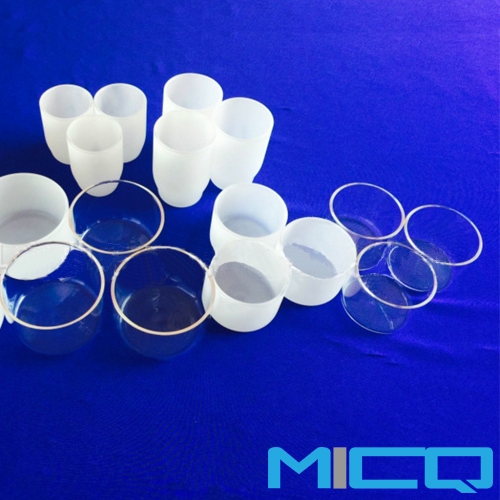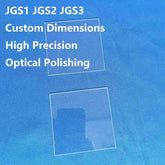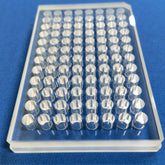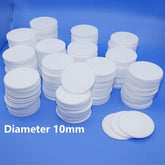How high a temperature can the material of the quartz crucible withstand?
A quartz crucible is a widely used laboratory vessel made of quartz, a high-purity silicon dioxide (SiO₂) with excellent physical and chemical properties. Consequently, the quartz crucible exhibits high thermal stability and corrosion resistance. For the material of quartz crucible can withstand how high the temperature, the following will be detailed from the material properties, thermal stability of quartz and practical applications.

Firstly, it is necessary to understand the material properties of quartz crucible. Quartz is an inorganic, non-metallic material comprising primarily of SiO₂, with a high melting point and a low coefficient of thermal expansion. The material of quartz crucible has excellent thermal conductivity and high temperature resistance, so the quartz crucible can maintain its stability and structural integrity under high temperatures. The specific range of high-temperature tolerance is dependent on the purity of the quartz material, the manufacturing process, and the dimensions and shape of the crucible.

In addition, quartz is a thermally stable substance with a relatively high melting point. The melting point of quartz is approximately 1713 degrees Celsius (3115 degrees Fahrenheit), which renders it an optimal choice for high-heat treatment and experimental applications.
In general, quartz crucibles are capable of withstanding temperatures in excess of 1000 degrees Celsius, with some quartz crucibles demonstrating the ability to withstand temperatures above 1500 degrees Celsius. However, it should be noted that in high temperature applications, although the quartz crucible can withstand high temperatures, it is susceptible to thermal stress due to its high thermal expansion coefficient, This renders them prone to thermal shock cracks in the event of significant temperature fluctuations.

Furthermore, in practical applications, the high-temperature tolerance of the quartz crucible is constrained by a variety of factors. The initial factor to consider is the purity and quality of the quartz material. The high-purity quartz crucible can withstand higher temperatures, while the low-purity quartz crucible is prone to melting or structural damage at high temperatures due to impurities. The second factor to consider is the manufacturing process of the quartz crucible. The specific manufacturing process employed will affect the structure and stability of the crucible, and therefore the quality of the manufacturing process must be taken into account when selecting the quartz crucible. In addition, the size and shape of the crucible will also affect its stability at high temperatures. In general, larger quartz crucibles are more susceptible to cracking at high temperatures.
As a common laboratory vessel, the quartz crucible has been employed in a variety of experimental procedures, including the heating of reagents at high temperatures, the melting of samples, solid-phase reactions, and powder sintering. The high temperature stability of the quartz crucible enables it to withstand many heat treatment procedures, such as annealing, melting, sintering, etc. Additionally, the quartz crucible is frequently employed to heat experimental samples in precision experiments, such as thermogravimetric analysis and sample analysis in melting furnaces. The high temperature resistance of the quartz crucible makes it a crucial tool in numerous laboratory and industrial applications.



In conclusion, quartz crucibles, as a laboratory vessel made of quartz material, demonstrate high thermal stability and corrosion resistance. The special structure and physical properties of quartz materials allow quartz crucible to withstand higher temperatures, typically exceeding 1000 degrees Celsius. Nevertheless, in practical applications, the high-temperature tolerance of the quartz crucible is also influenced by a number of factors, including its purity, the manufacturing process, the dimensions and the shape of the crucible. Accordingly, when selecting and utilizing a quartz crucible, it is essential to consider these variables and to exercise caution to prevent the formation of cracks due to thermal stress during operation.






